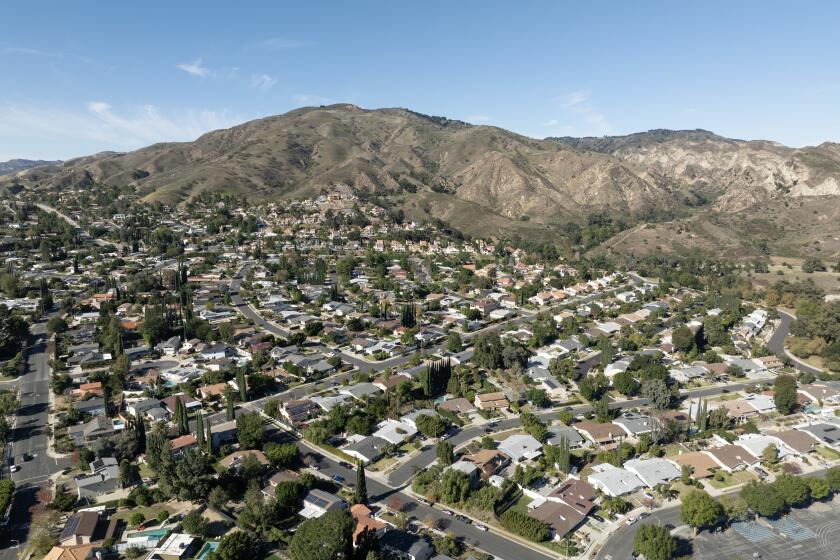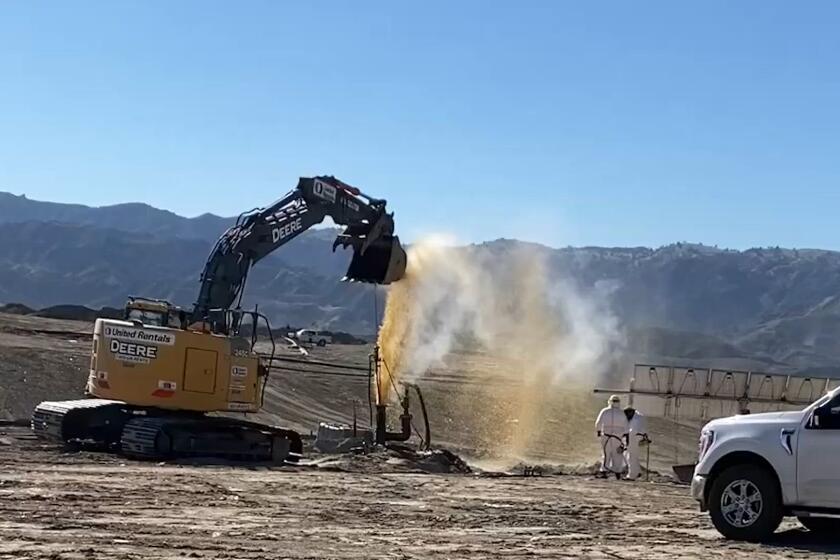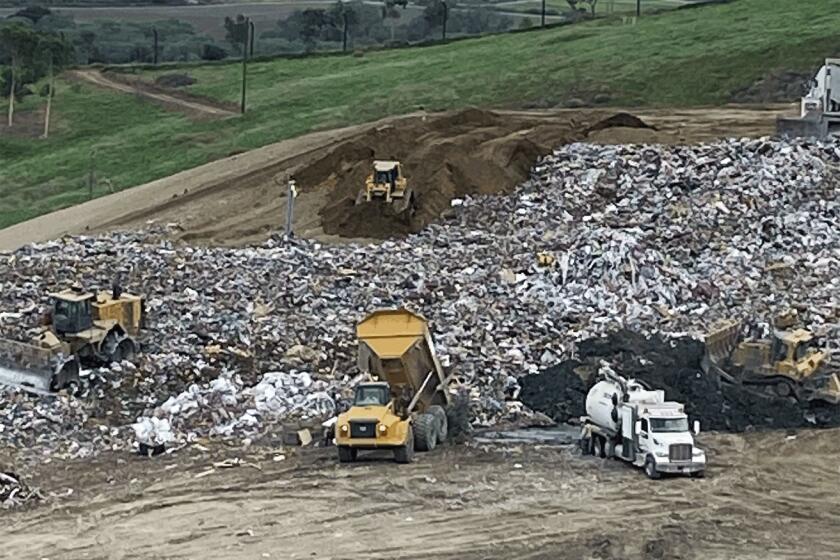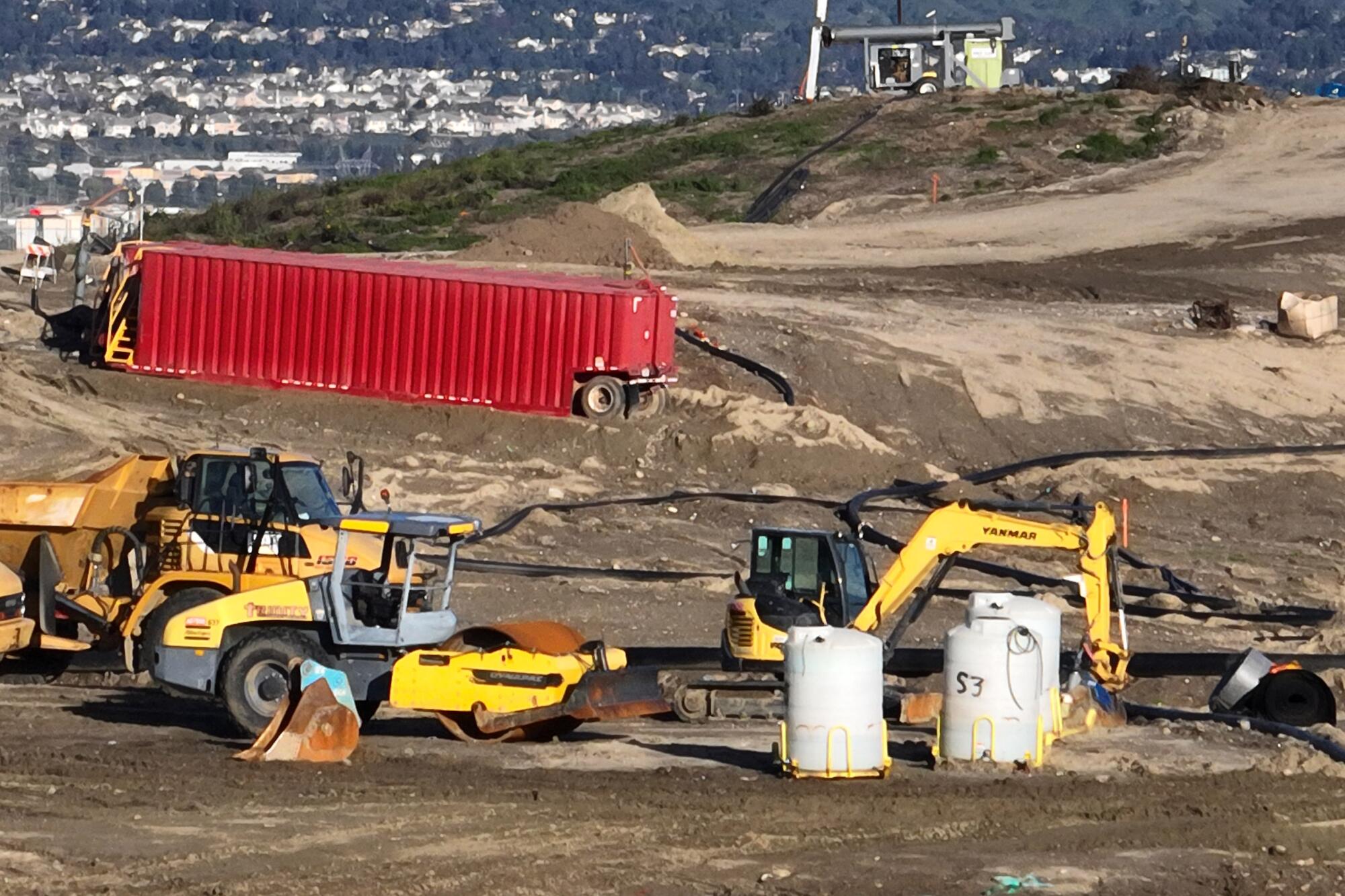
Federal officials have ordered operators of Chiquita Canyon landfill to take immediate steps to protect human health and the environment, saying the smoldering Castaic facility poses an imminent danger to nearby communities due to noxious odors and hazardous liquid waste.
The action taken Thursday by the U.S. Environmental Protection Agency comes amid growing calls to shut down the facility.
“This order reflects EPA’s commitment to ensuring landfill operators mitigate noxious odors and comply with federal law to prevent public exposure to hazardous wastes,” said EPA Pacific Southwest Regional Administrator Martha Guzman. “Today’s order is the result of local, state, and federal collaboration to better protect the health of nearby residents as well as the surrounding environment.”
Unusual chemical reactions at L.A. County’s two largest landfills raise serious questions about the region’s long-standing approach to waste disposal.
The source of the growing crisis is a heat-generating chemical reaction that probably began deep within the landfill in May of 2022. Extreme heat and growing pressure within the dump have caused piping-hot, contaminated water to spill onto the surface, or occasionally erupt like a geyser.
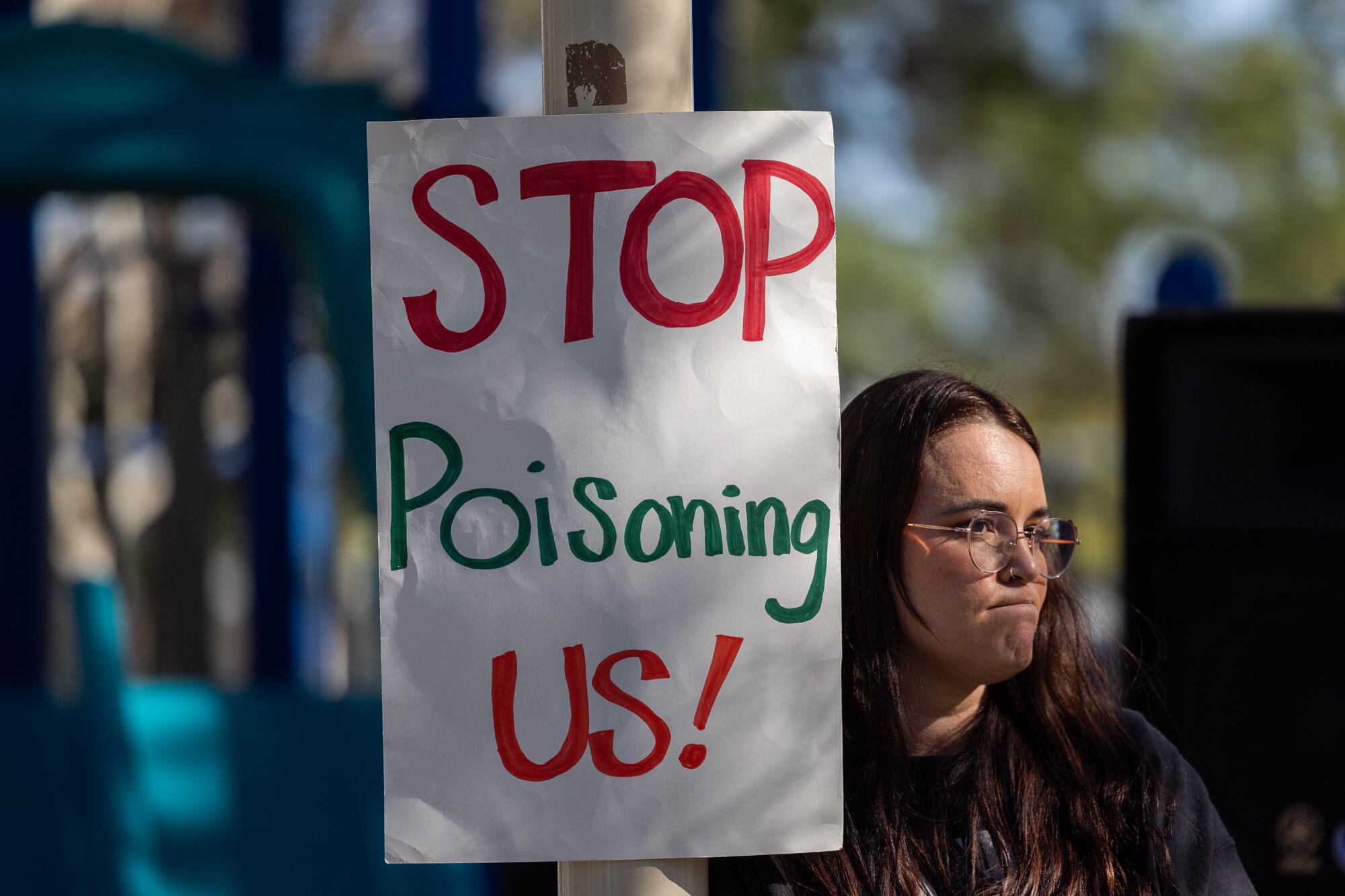
This polluted water has contained cancer-causing benzene above federal standards, making it liquid hazardous waste, according to environmental regulators. Officials have also raised concerns that toxic fumes are drifting into neighboring communities and polluted water has been discharged into nearby waterways due to heavy rains.
The landfill’s operator, Waste Connections Inc., says many of the EPA directives are already in the process of being implemented.
Although tests showed benzene levels in excess of federal standards as early as August, the landfill continued to send truckloads to two facilities that are unauthorized to handle hazardous waste, according to the EPA. In late January, landfill officials informed the facilities — Avalon Premium Tank Cleaning in Los Angeles County’s West Rancho Dominguez neighborhood and Patriot Environmental Services in Orange — that the polluted water contained “somewhat elevated” levels of benzene.
In addition, the landfill acknowledged that some of this chemical-laced water produced enough flammable vapor to be ignitable.
In addition to the EPA’s action, the California Department of Toxic Substances Control has issued multiple violation notices in connection with the landfill’s disposal of the hazardous waste.
Chiquita Canyon officials have argued that the elevated benzene found in some water samples is not representative of the larger amount of liquid that the company is trying to remove and transport.
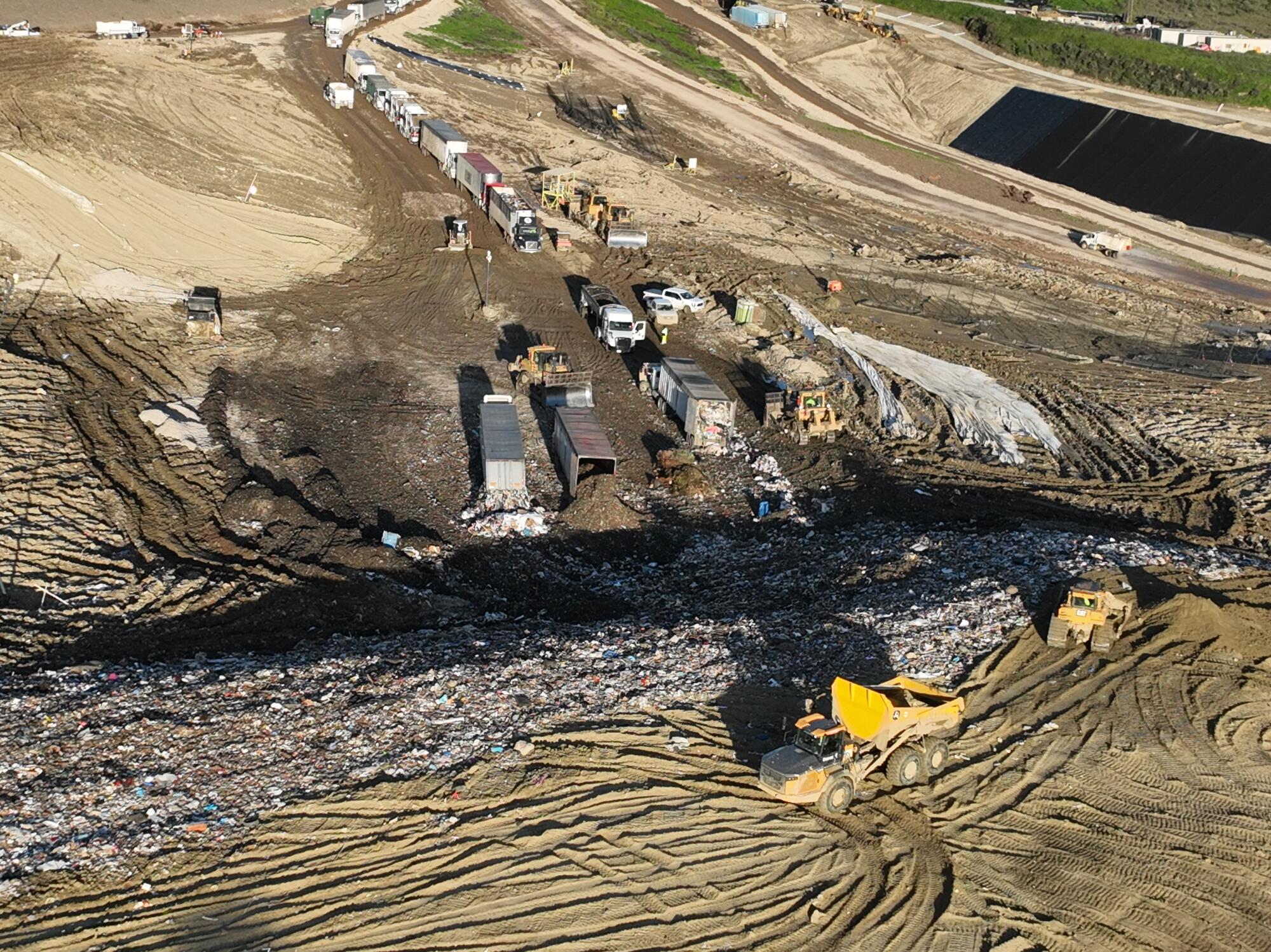
As landfill operators struggle to control the chemical reaction, they acknowledge that the amount of contaminated water leaking from the facility has increased from about 20,000 gallons a day to 200,000 gallons a day, according to landfill officials.
As an underground fire burns deep within Chiquita Canyon Landfill, air regulators are raising alarms over the possible spread of toxic vapors.
Residents surrounding the facility have lodged more than 7,000 complaints about noxious odors in the past year.
On Thursday, dozens of discontented residents gathered at Hasley Canyon Park in Castaic, where recent air sampling detected benzene concentration more than eight times higher than the state’s short-term health limit. The park is located alongside Live Oak Elementary School, where school staff began giving students the option to sit indoors instead of play outside for recess.
Among the demonstrators were California Assemblymembers Chris Holden and Pilar Schiavo. They were among several lawmakers who sent a letter to the state Department of Toxic Substances Control, requesting increased state oversight and accountability.
“At best, it would seem that the operators of the landfill only act when forced by authorities and regulators,” Holden said. “The operators of Chiquita Canyon landfill have delivered inadequate results in addressing the alarming concerns of the public nuisance they are causing. This is a public health crisis caused by them. It requires a permanent solution that provides immediate relief for the impacted communities and their families.”
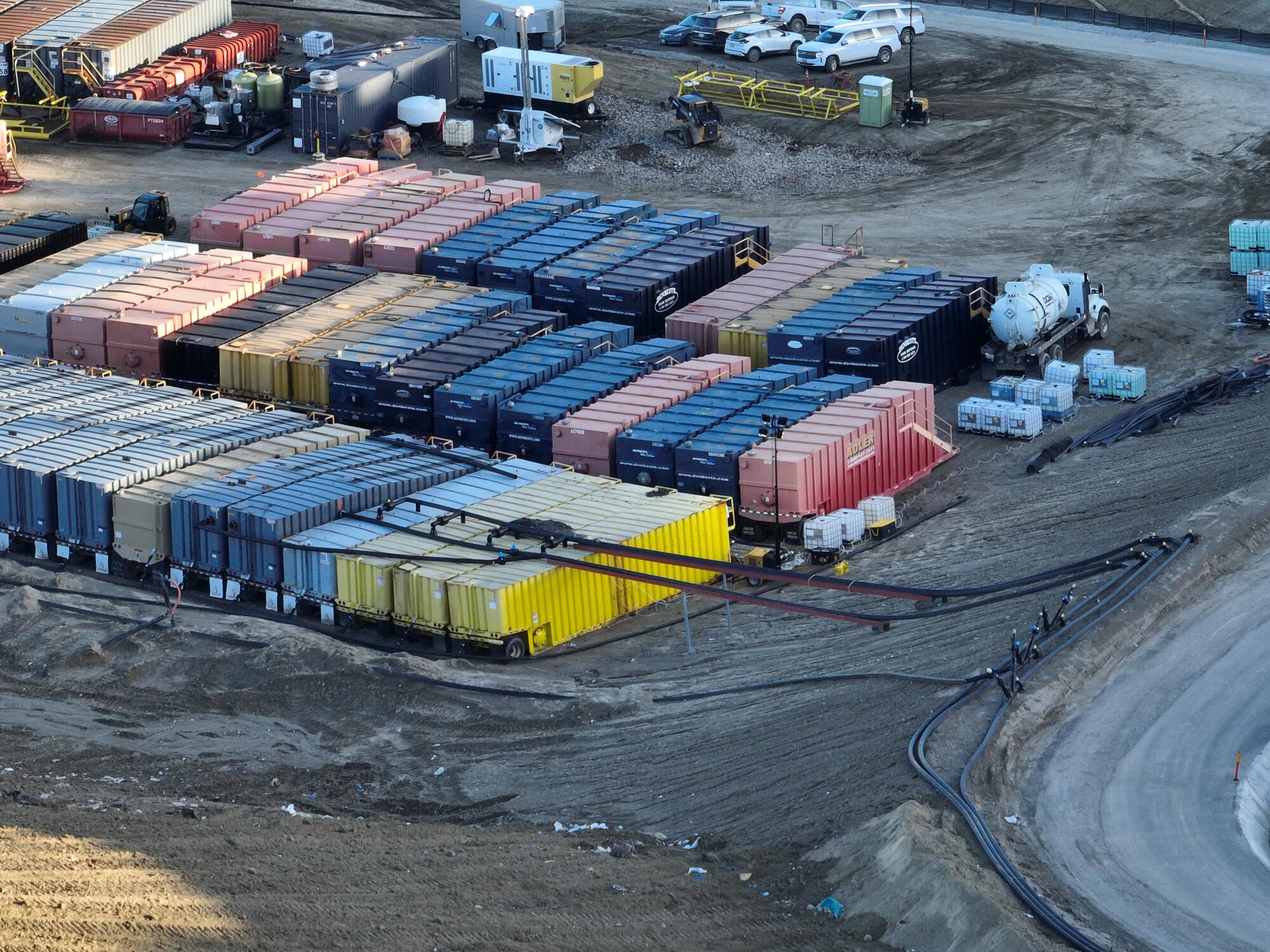
Recently, Citizens for Chiquita Canyon Closure, a nonprofit based in Val Verde, sued Los Angeles County, demanding that the permit be revoked and calling for waste disposal activities to immediately cease. The landfill, the second-largest in L.A. County, accepts roughly 7,000 to 8,000 tons of garbage daily.
Christina Orellana, who is a member of a separate class-action lawsuit against the landfill and the county and who also lives in Val Verde, said the odors from the landfill have given her family members headaches and made it difficult to breathe. It’s been especially difficult on her daughter who can no longer play outdoors, she said.
A county-hired environmental firm found that toxic gases released by Chiquita Canyon Landfill do not pose a significant cancer risk. Residents are skeptical.
“She knows on the mornings where she needs to run to the car to avoid the exposure,” Orellana said. “She cries because she can’t play outside. She can’t go on her trampoline, she can’t rollerblade. She also cannot escape the physical and mental impacts this crisis has caused. ... The county fails to protect our health and quality of life by allowing Chiquita Canyon landfill to remain open.”
L.A. County Supervisor Kathryn Barger, who represents the area, wrote a letter calling on the landfill to provide funds to relocate residents who want to temporarily move until the issue is resolved. However, Barger has expressed hesitance to close the site.
“The County cannot unilaterally close the landfill without justification,” Barger said in a statement Thursday. “The odors do not originate from active portions of the landfill and since the landfill’s operator is actively working to abate odors, closing the Chiquita Canyon Landfill would have no effect on decreasing or eliminating odors.”
John Perkey, vice president of Waste Connections, attended a community meeting Feb. 13 and said the landfill was in the process of putting together a program to distribute funds that nearby residents could spend to relocate or make improvements to their homes to abate the odors.
But the thought of moving is disquieting for longtime residents including Amber Elton, who has lived in Val Verde for more than 30 years.
“They would need to provide us with a similar housing situation,” she said. “We can’t be relocated to a motel room with our kids and dogs, and asked to live in that way. I mean, these are our homes.”
